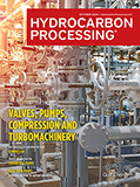Neste, ITOCHU, Gas Caltex collaborate to make the first batch of CORSIA-certified SAF available for purchase in Japan
Neste, ITOCHU and GS Caltex have collaborated to make the first batch of CORSIA-eligible ISCC-certified sustainable aviation fuel (SAF) available for purchase at Narita International Airport in Japan. This is the first time that CORSIA-certified SAF was made available for airlines’ regular purchase at commercial scale, well ahead of the start of CORSIA’s mandatory phase in 2027.
As part of the collaboration, Neste supplied over 1,000 tons of neat (i.e. unblended) CORSIA-eligible and ISCC-certified Neste MY Sustainable Aviation Fuel to the refinery of GS Caltex in Yeosu, South Korea to be blended with conventional jet fuel. This marked the first time SAF was blended locally in South Korea. The blended SAF was then transported to Japan for ITOCHU to supply it into the fuel storage facilities at Narita International Airport. The first batch of the fuel will be offered to All Nippon Airlines (ANA) and Japan Airlines (JAL).
“Sustainable aviation fuel is a readily available solution for reducing greenhouse gas emissions from air travel. CORSIA-eligible SAF provides airlines like ANA and JAL an opportunity to credibly reduce aviation emissions. This milestone shows how we are working together with partners like ITOCHU and GS Caltex as well as local governments to develop the supply chains for SAF to make the fuel even more readily available in the Asia-Pacific region and around the world. We are looking forward to further expanding our cooperation with our partners to increase our supply of SAF to airlines,” said Alexander Kueper, Vice President, Renewable Aviation Business at Neste.
“In collaboration with Neste and GS Caltex – our trusted partners – we have successfully established a groundbreaking supply chain for the delivery of CORSIA Eligible Fuel to airports in Japan. We firmly believe that this initiative will significantly contribute to resolving the aviation fuel shortage in Japan. Furthermore, it marks a pivotal step towards the decarbonization of the aviation industry. Looking ahead, we are dedicated to working alongside Neste and GS Caltex to ensure a consistent supply of aviation fuel while advancing our shared goal of decarbonization," said Tetsuya Yamada, Executive Officer, Chief Operating Officer, Energy Division at ITOCHU Corporation.
“This is a great example of working together to help achieve aviation’s net-zero carbon emissions goal, where Neste, ITOCHU and GS Caltex have built a new value chain based on their respective expertise, with active support from the Korean and Japanese governments. This was achieved based on a shared commitment to help the aviation industry with its efforts to decarbonize. Through this business development, the customers will be able to receive a stable supply of CORSIA-eligible SAF ahead of the start of CORSIA’s mandatory phase in 2027, contributing to airlines taking a further step towards reducing their carbon emissions. Moving forward, GS Caltex will further expand its cooperation with partners, Neste and Itochu, to contribute to the decarbonization of the aviation industry in Korea, Japan and globally,” said S. H. Lee, Executive Vice President, Head of Supply & Trading Business Unit at GS Caltex.
CORSIA-eligible SAF
CORSIA is a recognized scheme offering a harmonized way to reduce CO2 emissions from international aviation to curb its impact on climate change. It was developed by the International Civil Aviation Organization (ICAO), and the implementation of CORSIA is currently in the first, voluntary phase. Once certified by an ICAO-approved sustainability certification scheme, SAF qualifies as a CORSIA Eligible Fuel (CEF) and can be used by an airline to meet the CO2 emission reduction allocation requirements under CORSIA. In 2022, Neste supplied the first-ever batch of CORSIA-certified SAF as part of a pilot of certifying SAF as a CORSIA Eligible Fuel. Using unblended Neste MY Sustainable Aviation Fuel™ can reduce greenhouse gas emissions (GHG) by up to 80%* over the fuel’s life cycle, compared to using conventional jet fuel.






Comments